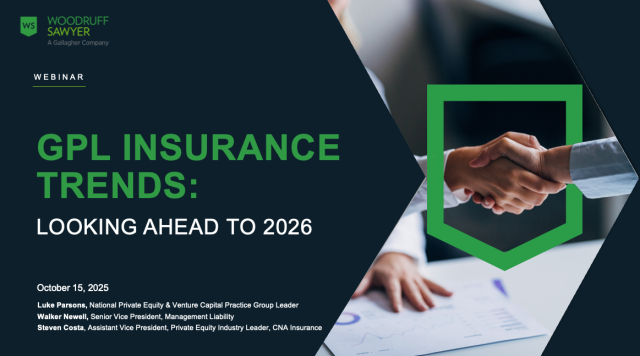Blog
Risk Mitigation for Asset Managers After the Demise of the Private Fund Adviser Rules
The Fifth Circuit Court of Appeals is where regulators’ dreams go to die. For years, the conservative, Texas-facing appellate court has been the forum of choice for litigants trying to trim the sails of the federal administrative state—and, specifically, the SEC.
Some of Fifth Circuit’s greatest hits in recent years include:
When the SEC adopted its Private Fund Adviser Rules (“Rules”) in August 2023—over strong objections from industry—it did not take a master litigation strategist to figure out what would come next. Industry groups sued the SEC in the Fifth Circuit and requested an expedited ruling in the hope that the Rules might be eliminated before costly compliance would be required.

Fund Managers Good, SEC Rules Bad
On June 5, 2024, an all-Republican three-judge panel issued a terse opinion striking down the Rules. If we had to explain the decision to a three-year-old, we would tell him that the court said: “Private fund managers very nice. SEC rules very, very bad.” (If you want a deep dive into the legal reasoning including some interesting echoes of old Clarence Thomas concurrences, check out the recording of our June 6 webinar).
The decision was a true gift and an unalloyed good for hedge fund, venture capital, and private equity managers. The SEC has not signaled whether it plans to seek en banc review in the Fifth Circuit (a low percentage bet), ask the Supreme Court to look at the case (another low percentage – but maybe slightly better? – bet) or try a differently structured rulemaking effort in some murky future. Regardless, in the near term, legal and compliance teams can press pause on formal compliance efforts and soak up the summer sun.
Does this mean that fund managers should ignore the areas addressed by the Rules? We wouldn’t, for at least three reasons:
- Some institutional limited partners may continue to agitate for versions of certain protections that the Rules had contemplated. Many large institutional investors supported the Rules. A significant LP industry group has expressed displeasure with the Fifth Circuit decision and has stated that it will continue efforts to enhance quarterly reporting in the private funds industry. In other areas (for example, the preferential treatment rules), investors may already have received—or may expect to receive—the protections called for by the Rules.
- Certain areas of the Rules (e.g., conflicts-related provisions) reflect longstanding SEC exam and enforcement priorities for investment advisers. If the SEC staff believes—as many clearly do—that investors in private funds need more protection, we shouldn’t expect them to hang up their spurs after the demise of the Rules. More likely, they will redouble their efforts to root out what they view as problematic practices through traditional exam and enforcement activities and legacy legal theories.
- Some fund managers have already implemented programs focused on compliance with the Rules. If this describes you, it’s worth asking whether it makes sense to retain features of this compliance infrastructure while keeping an eye on the ongoing dialogue between managers and LPs.
While there is rest for weary legal and compliance pros at asset managers, and as you enjoy a cool Arnold Palmer in your hammock this Independence Day, spend a few minutes thinking about how your firm can leverage this moment going forward from a risk mitigation, compliance, and investor relations perspective.
Turning to risk mitigation, what impact will the death of the Rules have on insurance for private fund managers? Let’s dig in.
Underwriting Regulatory Risks for Asset Managers
In the asset management space, ample supply in the market in recent years (after the “hard market” of a few years ago) has created downward pricing pressure on insurance premiums and allowed good insurance advisors to negotiate strong coverage terms.
In general, more regulation and more litigation mean more losses for insurance carriers. More losses mean that insurance carriers must increase premiums and/or curtail coverage terms to maintain profitability. This is bad for firms.
Had the Rules remained in effect, they would have created many new avenues for the SEC to examine, investigate, and sue venture, hedge, and private equity managers. Before the Fifth Circuit intervened, it would have been reasonable to assume that the SEC’s activities under the Rules would create greater losses, more coverage exclusions, and higher insurance premiums, right?
Maybe. Losses from emerging areas of regulatory risk can take several years to really show up on insurance carriers’ balance sheets. Compliance with the Rules may have been on sophisticated underwriters’ lists of questions for asset managers this year, but it’s not clear that the passage of the Rules—or, in our current world, the demise of the Rules—would have a measurable impact on insurance, especially in today’s market environment.
If our system of law and governance continues to work in roughly the same way that it has for the past several decades, we expect that regulators will continue to look for ways to police private fund managers. As the SEC likes to observe, private fund managers handle more assets than domestic banks.
As long as private capital remains systemically important to our economy—and to pension funds serving cops, firefighters, widows, and orphans—regulators will look for ways to bring cases. Creative securities plaintiffs will continue to look for new legal hooks to extract rents from fund managers. In a world similar to the current one, you shouldn’t expect regulatory and litigation risks to diminish meaningfully.
More generally, the financial services insurance marketplace is currently facing a potential inflection point. There has been a noticeable recent uptick in the frequency and severity of claims and carrier losses on asset management insurance policies. As a result, top insurance carriers in this space may begin to look to restrict coverage and increase pricing, despite continued competitive pressures. Insurers need to make money, and the downward pricing trends of recent years are likely unsustainable from a long-term profitability standpoint.
Does this mean that insurance costs will trend upward, and broad coverage costs will become harder to negotiate? Not necessarily. The primary drivers here will continue to be supply and demand. Under any future scenario, while good terms and pricing may continue to be available in the market, you won’t get them unless you ask. To get the best possible coverage at the lowest possible cost, make sure you are working with advisors who have a deep and specialized understanding of insurance and regulatory and litigation risk for asset managers.
Authors
Table of Contents













